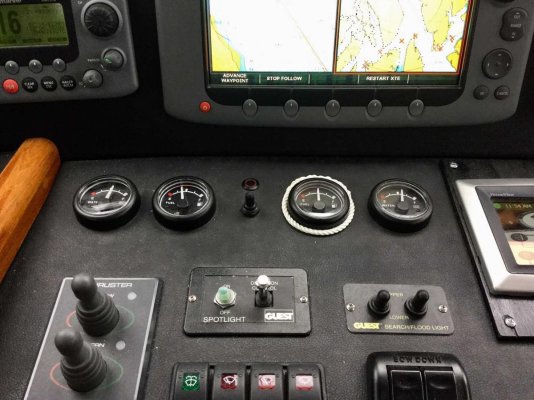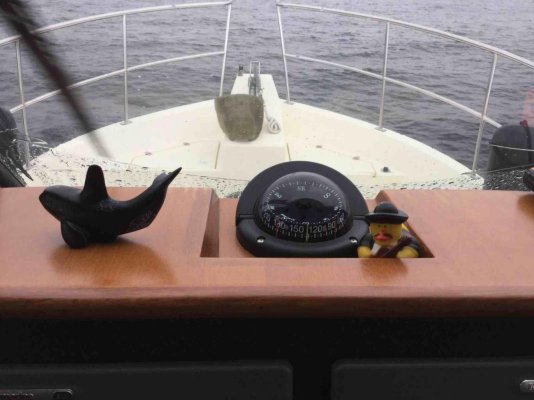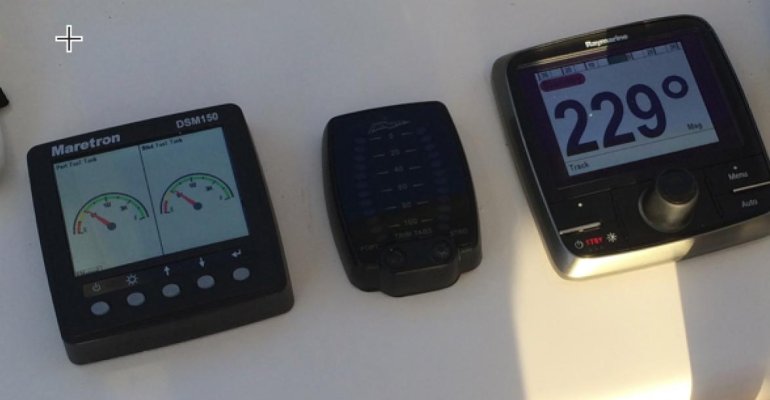IIRC my water tanks have cross connections so you can pull from any one of the 4 of them. This can be done to fine tune trim, or if there is some other reason to isolate one tank. All 4 are 75 gal, for a total of 300 gal. Once I figured out what all the valves do, I opened them all, so I never need to adjust trim with the water tank levels. The two in the quarters are higher, tops just below the deck and the ones under the bed are lower, tops below the bottoms of the other 2. When the top of the bed tanks start oil canning, we are into those, so the sight tubes on the upper 2 in the lazarette are unnecessary. No sight tubes on the lower tanks, so keeping track of the no of days before the first sounds from the lower tanks works, assuming usage stays the same.
For fuel, there is a crossover line with a valve on it. IIRC it too remains open, though with twins it isn't nearly so critical as with a single. The genset pulls from Stb, the diesel stove from the P, so before solar panels, non-engine use was about the same. Now, not so much, so leaving the crossover open probably helps. I use my logbook, record hours of use, usually run at 2000rpm, so same per hr usage. When I will get a 1000l price discount, I will start thinking about fuelling. I used to have a stick, but it got so little use I got rid of it. My tanks hold 2600l, so I usually fuel at around 1/2 full. The biggest fuel load I have ever taken was about 1500l, several years ago.
I don't need gauges, for water or fuel.
I still need to keep my panel dusted, despite the lack of fuel or water gauges.





